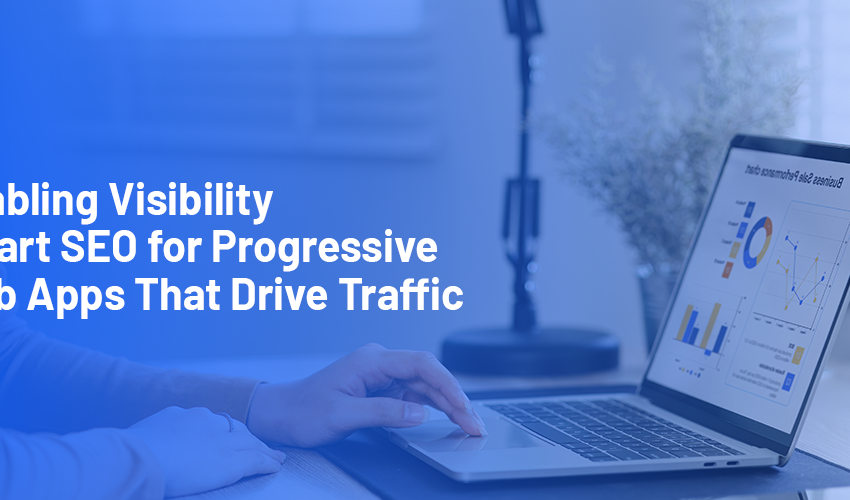Enabling Visibility: Smart SEO for Progressive Web Apps That Drive Traffic
Progressive Web Apps have redefined how we think about mobile and web experiences. Blending the power of native apps with the accessibility of websites, PWAs deliver fast, installable, and reliable user journeys. But even the most seamless PWA will fall short without visibility. That’s where technical SEO becomes crucial.
If you are developing a Progressive Web App and want it to perform well in search results, understanding technical SEO for Progressive Web Apps is your starting point. Let’s look at the methods, examples, and strategies that can help you maximize your visibility and reach.
The SEO Challenge with PWAs
While PWAs offer lightning-fast load times and offline capabilities, they often rely on JavaScript frameworks like Angular, React, or Vue. This creates a challenge for search engines, which sometimes struggle to crawl and index JavaScript-rendered content. If Googlebot cannot see your content, it cannot rank it.
That’s why it is critical to structure your PWA with search engine crawlers in mind from the beginning.
Focus on Server-Side Rendering (SSR) or Pre-Rendering
When content is rendered entirely on the client side, search engines may have difficulty processing it. One of the most reliable solutions is server-side rendering (SSR). With SSR, content is delivered as static HTML, which bots can easily crawl.
Pinterest transitioned its mobile site to a React-based PWA with server-side rendering. The result? A 40% increase in search engine traffic and longer session durations. SSR allowed them to preserve all PWA advantages while ensuring full indexability.
If full SSR feels complex, pre-rendering can be a solid middle ground. Tools like Prerender.io can help generate HTML snapshots for crawlers while still delivering the dynamic content users expect.
Structured Data Makes the Difference
Structured data is one of the most overlooked aspects of technical SEO in PWAs. It helps search engines understand your content better. Use schema.org markup to describe elements such as articles, products, events, and reviews.
For example, Yummly implemented structured data into its PWA to enhance recipe discovery. With rich snippets enabled, their pages stood out in search results, increasing click-through rates dramatically.
Make sure your structured data is validated through Google’s Rich Results Test and consistently updated as your content evolves.
Use Canonical Tags Wisely
Duplicate content is a known issue for many PWAs, especially those using dynamic URLs or client-side routing. If your app has multiple paths to the same content, search engines may get confused about which one to index.
Add canonical tags to help guide crawlers. They specify the preferred version of a URL and help consolidate SEO signals. Without proper canonicalization, your rankings could be split across different URLs, weakening your visibility.
Make Navigation Search-Friendly
PWAs use service workers to enable offline functionality and advanced caching. While this improves performance, it can interfere with crawling if not configured correctly. Ensure that all internal links are accessible in your app shell and provide fallback URLs that work without JavaScript enabled.
Twitter Lite, one of the most successful PWAs, keeps its navigation lightweight and crawler-friendly. Despite relying heavily on JavaScript, it provides clear navigation paths, ensuring deep content is always reachable by bots.
Speed Matters—Especially for Mobile
Core Web Vitals have become essential ranking signals. Your PWA must perform well on metrics such as Largest Contentful Paint (LCP), First Input Delay (FID), and Cumulative Layout Shift (CLS). Optimizing images, using lazy loading, and compressing scripts are all vital steps.
Tools like Lighthouse and PageSpeed Insights help track these metrics. The faster your PWA loads and responds, the more Google rewards it in mobile-first indexing.
Service Workers and SEO: Tread Carefully
Service workers power many PWA features like push notifications and offline mode. But when misconfigured, they can block essential resources from being indexed. You need to make sure service workers don’t interfere with bots accessing critical pages.
Conduct regular testing using the URL Inspection Tool in Google Search Console. If pages are not indexed or show errors, service worker scripts could be part of the problem.
Why Choose Untitled10 to Build Optimized PWAs
At Untitled10, we approach every PWA with technical SEO in mind from day one. Our experts combine UX, performance engineering, and SEO architecture to ensure your app is both delightful to use and highly visible in search rankings. Whether it’s SSR setup, structured data implementation, or deep crawlability audits, we help you with technical SEO for Progressive Web Apps.
Looking to bring your PWA to life and maximize its reach? Get in touch with Untitled10 and let us help you build smarter.
FAQs
Can Progressive Web Apps rank on Google?
Yes, but only if built correctly. PWAs can rank just like traditional websites when they are crawlable, indexable, and follow SEO best practices like server-side rendering and structured data.
What technical issues affect SEO in PWAs?
Common issues include JavaScript rendering delays, lack of structured data, and misconfigured service workers. Ensuring all content is accessible to bots is key to solving these problems.
Do I need different SEO strategies for PWAs vs websites?
PWAs require more focus on technical SEO. While content and keywords still matter, you must ensure JavaScript-heavy content is rendered properly and your app works well for both users and crawlers.





